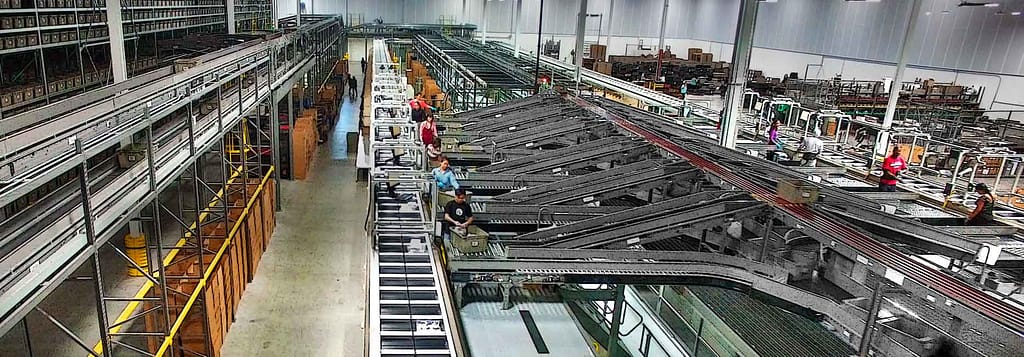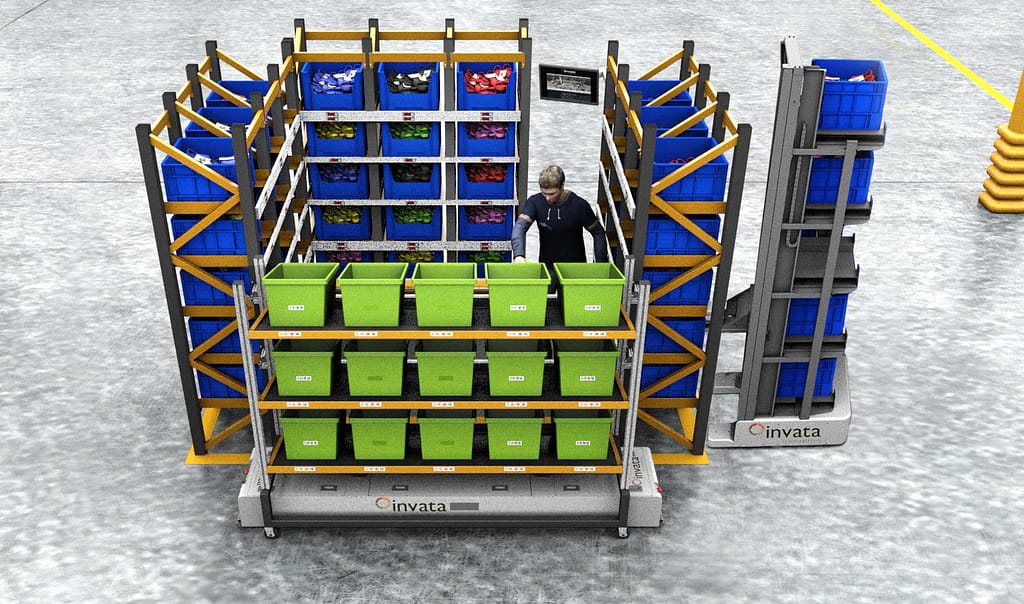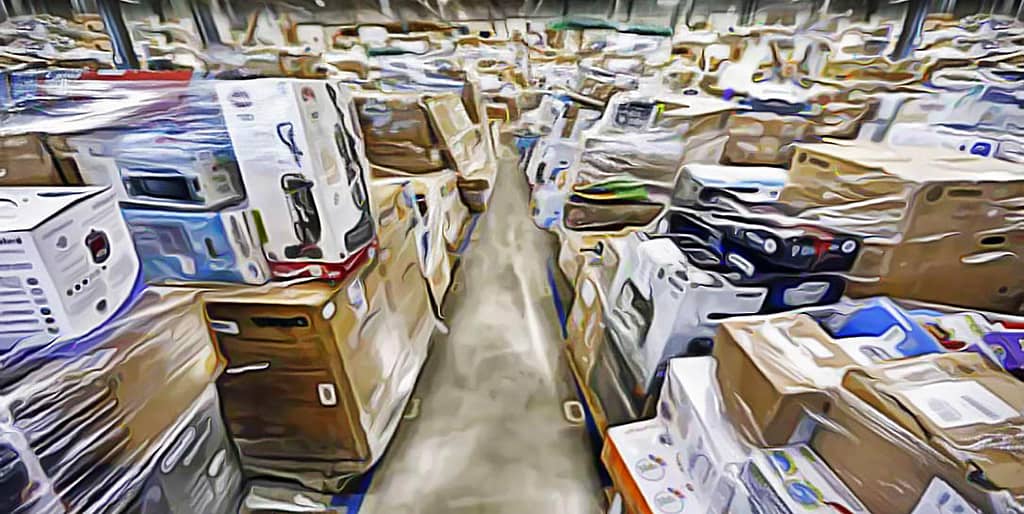With the explosion in ecommerce demand brought to us largely by the pandemic, there has been an equally impressive mushrooming in returns processing demand.
And given that for some businesses, the cost of returns can amount to 30% of online sales and, depending upon their processing approach/capabilities, can account for as much as 65% of the cost of goods sold, many companies may be feeling a bit shell-shocked by now.*
What’s more, with peak season just around the corner, many of those businesses may be wondering if this will be the year their returns process blows up completely.
The “ticking time bomb” of returns processing as Tom Enright, Vice President in Gartner Supply Chain Research for the retail industry famously put it, is a make or break discipline that can’t be ignored if retailers are to succeed in ecommerce.
As Enright put it, unless retailers “invest in their ability to manage returns, the volume of returns coming back will cause problems in their overall supply chain.”
For some businesses the answer is to outsource the returns process, but for companies that want to integrated their reverse logistics process into their overall supply chain processes there are many innovative and creative options that businesses can use to enhance their competitive edge.
Here are three critical steps you can take to ensure your returns process is working for you instead of against you.
Step 1: Multi-Task Your Automated Fulfillment Equipment Systems
Automated fulfillment providers often view the returns processing challenge as one that should be separated from the order fulfillment process. As a result, they will propose their clients build a second material handling system to tackle their reverse logistics requirements.
But don’t be fooled, that is simply not necessary.
With the right software and integration expertise, even the most sophisticated order fulfillment system can be designed to process reverse logistics on the same equipment on which outgoing orders are processed.
By multi-tasking equipment with multiple processes, companies can:
- Substantially lower system infrastructure requirements.
- Eliminate the potential capital expenditures for the secondary systems.
- Significantly lower potential labor related expenses for the operation.
A notable MSI Automate system handled all aspects of a client’s retail distribution requirements (for both lease and company owned operations), wholesale distribution requirements, ecommerce fulfillment requirements (including orders from various websites as well as some of its retail partners’ websites), and reverse logistics processing requirements for its U.S. market and international markets through one system.

In doing so, the system took a multi-purpose approach to the use of the ASRS equipment, unit sorter, and put walls, to incorporate the company’s reverse logistics process, which entails seasonal call backs, transfers, consolidations, repositioning, and returns for the company’s various ecommerce channels as well.
Using our WES software to incorporate two different processing methodologies, the sorter, ASRS and put walls run in two modes: order fulfillment and returns processing. Items are returned to inventory through the returns process that are then used to fill orders in the fulfillment process.
It provided a holistic approach to logistics that garnered the company a strategic edge in fulfillment and returns processing.
Step 2: Incorporate Robotic Technology into Your Returns Process
Through intensive research and development of robotics technology, we’ve learned many things over the past few years.
Most importantly, we’ve learned that there are a multitude of applications in which robotics can offer impressive improvements in efficiencies in both the automated fulfillment and returns processing disciplines.
The reason for this is that robotic technology not only dramatically enhances the toolbox of equipment now available for problem solving, it also radically expands the ways in which we can solve problems.
Simply put, robotics provides new ways of looking at process. It opens the door to a whole new level of optimization and in doing so:
- Expands possibilities.
- Enables us to tackle problems in innovative ways not previously possible.
- Empowers our clients to achieve new heights of productivity, while lowering costs.
In a previous blog on robotics, we focused on our findings from testing out a new AMR supported goods-to-person station. Those findings resulted in:
- A 2-3x increase in the number of puts per SKU presentation.
- A 50-70% reduction in the need for recirculating the totes required to fill orders.
- A 2x increase in the number of orders that could simultaneously be filled per station.

But what was equally as exciting was our finding that the same stations could be used in reverse for returns processing — meaning those same efficiencies could be applied to a reverse logistics process.
And that’s just one of the applications we’ve been evaluating for robotics technology.
As a result, we have presented clients with solutions for returns processing that reduce labor requirements by more than 70%, space requirements by 50% and overall operating costs by 25%.
By using robots to decouple previously linked processes and expand operational capacities far beyond the throughput constraints of traditional material handling equipment, we are able to offer rate increases in functions by a multiple as high as 4x – 6x.
So if you haven’t considered robotics for your returns processing operation, you should.
Step 3: When Thinking About Returns Processing, Think Software First!
There’s a reason Tom Enright called returns processing a “ticking time bomb” for retailers.
It’s a messy process that:
- Demands specialized handling of goods that varies between the types of goods and the types of returns being processed (e.g. seasonal returns from stores or ecommerce returns from customers)
- Provides little predictability in terms of volume or types of products being returned.
- Requires reversing many of the functions inherent to the fulfillment process.
- Presents intimidating, if not overwhelming processing, sortation, storage, and inventory control challenges to those who take it on.

Beyond that are the challenges of equipment and labor management, which for automated systems require real-time assessment and control to optimize operational efficiency.
All of those complexities demand a level of orchestration and control that can only be achieved through a sophisticated warehouse software platform.
Ideally, the platform you choose will have three critical components:
- Core reverse logistics functionality built-in and fully integrated with other functionality requirements.
- Functionality that is configurable to your unique business requirements.
- Plug-in technology endpoints.
A fully integrated software platform with core functionality and configurable architecture enables your provider to tailor a system to your unique challenges.
But more importantly, at MSI Automate, it enables us to deliver more innovative and creative solutions.
Having been delivering returns solutions to our clients for over 7 years, we have refined and tested our software platform such that it allows for any kind of automation that we can throw at it. And we have configured it with technology endpoints that enable us to plug-in whatever technology best fits a client’s needs, emerging technology included — meaning you can use disruption to your advantage rather than fear it.
So our design team is freed from the limitations that typically throttle others and we can deliver comprehensive returns processing solutions that are fully integrated with the rest of the warehouse operation.
The bottom line here is that the software you choose will either limit your options or expand them. So choose wisely. And, most importantly, choose your software first.
Defuse Your Returns Process
Returns are an unavoidable component of ecommerce today, but they need not blow up your business.
The right software can open the door to technology enablement, which in turn can open the door to solutions that solve problems in ways not before possible.
And that opens the door to new levels of optimization in the returns process, which can give your business a critical edge in returns processing.
For a demonstration on how our returns processing advancements can improve your reverse logistics operation, set-up a free consultation with our team.
* Kurt Solomon, 2013
Walter High is VP Marketing at MSI Automate, where he has worked since 2012.

